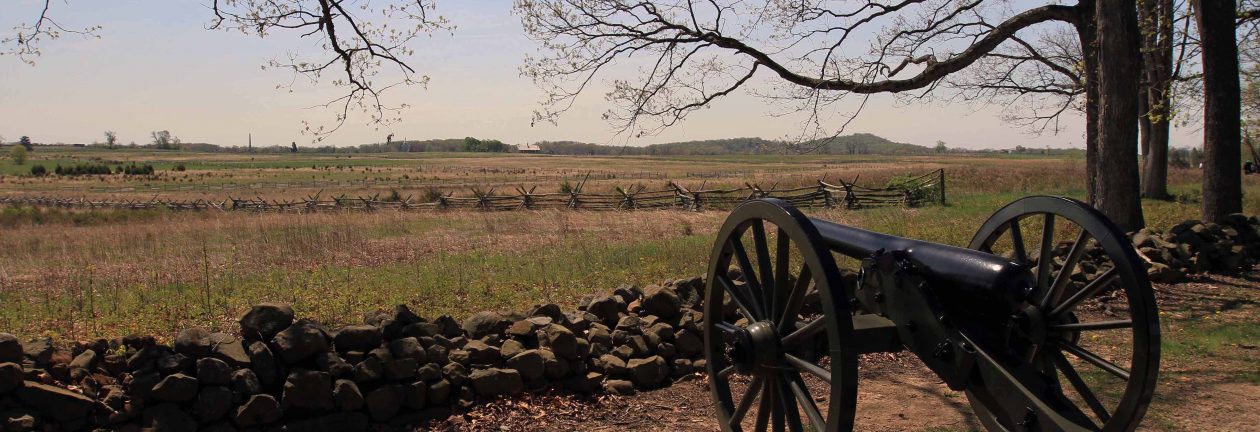Nanjing, China
I slept horribly on the train last night. I must have inadvertently had another pack of cigarettes while I was sleeping (I was even closer to the smoking area this time) because I kept on coughing throughout the night; although more bothersome than that was the train car continually bumping up against the other cars and possibly continually switching tracks (it was a bumpy ride). Anyway, I finally got up around 08:00 and in less than a hour we were at Nanjing Railway Station. I departed the train, bought my onward ticket to Shanghai for the 19th (I read online that trains in China fill up quickly, so one must book in advance), got on to the subway, made it to the nearest stop by the hostel I will be staying at, and walked with my backpacks strapped on to me (an old man was amused with the weight I was truckin’) to the hostel (thankfully they had a picture of their facade, otherwise it may have taken longer to find it since it was tucked further in to the neighborhood than the Booking.com map led me to believe). I checked in, dropped my stuff off, freshened up a little from the sixteen hour train ride, and then headed off back to the subway.
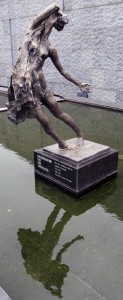
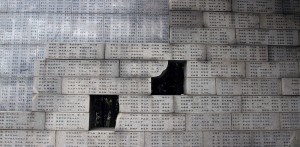
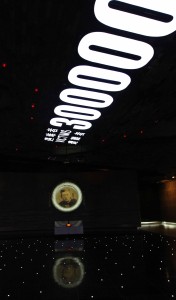
My first site to visit today was the Nanjing Massacre Memorial Hall. It is a monument to the 300,000 Chinese brutally murdered by the Japanese Army in December 1937 during the invasion campaign against Nanjing (also known as, “the rape of Nanking”), which was then the capital of China. Plaques on the sculptures that greet you as you enter the memorial continually refer to the Japanese as “devils”; clearly, too, there is a lot of pain behind those roughly sculpted and grotesque figures. Inside the memorial compound are more modern sculptures and reliefs capturing the utter agony the Chinese victims must have felt. Inside the exhibit hall are numerous artifacts (many Japanese military relics), testimonials from surviving witnesses, and gruesome photos. The atrocities committed here rival those by Nazi Germany in Europe, though, admittedly, on a smaller scale in terms of humans murdered (also worthy to note: John Heinrich Detlev Rabe, one of the Western heroes in Nanjing who helped establish the Nanking Safety Zone, which saved approximately 200,000 Chinese from being massacred, was the leader of the Nazi party in Nanjing at the time – he protested to the embassy and had tried to urge Hitler to use his influence to help stop Japan’s inhuman violence). The memorial site was chosen here because it is the site of a mass grave containing 10,000 bodies, piled on top of one another; inside three of the buildings on the site are the unearthed skeletons of the victims, dug up from this mass grave, and on display as if it were still an ongoing archaeological dig.
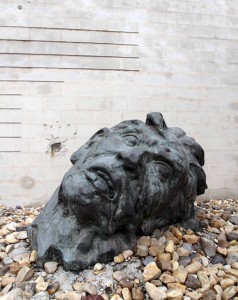
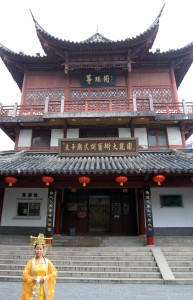
After leaving that somber site, I got back on to the subway and made my way to the Confucius Temple, which I found out is located in the middle of a shopping mecca; there was a modern mall next to it and all the streets leading to it were lined with stores in the same styled buildings. The ticket to the temple comes with admission to the nearby folk art museum, a small building showcasing traditional costumes, gold leaf sculptures, and paper lanterns. In fact, during the local spring festival, many different and well constructed lanterns are paraded about on the streets and nearby river.
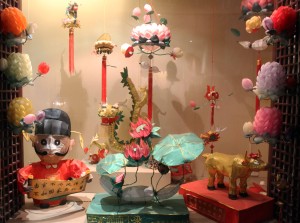
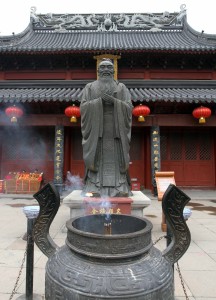
The Confucius Temple itself was nice with artifacts from its history, statues of all the important disciples of Confucianism, and Dacheng Hall (the main hall on the complex), which had a giant portrait of “Saint Confucius” (as several of the historical markers refer to him) and very beautifully carved jade reliefs depicting various scenes related to the religion. I certainly admire the core teaching of Confucius (after having read his ‘Analects’) just as I admire the core teaching of Buddhism as laid out by Siddhartha Gautama, but in both cases I’m at a loss as to where the worshipping and praying come in . . . I will have to study the history of both religions more to understand that because I find it unnecessary unless used for meditation or focusing one’s thoughts, but not for praying to deceased wise men or associated ‘deities’.
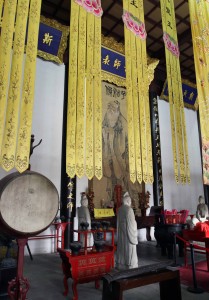
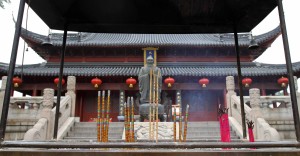
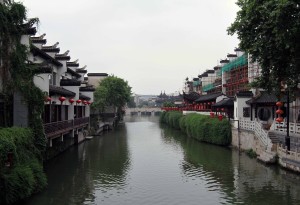
I then left the Confucius Temple complex and wandered around the shopping area and the river before finding a Walmart and buying some much needed supplies. In the Walmart I saw the whitening lotions that I had read about in the news that are popular here in Asia (white skin is in, tan skin is out – this must be how Michael Jackson got his supply, may he rest in peace), as well as the different meats on display here in Asia that you wouldn’t see in the United States (squid tentacles, chickens with their heads intact, etc. on display in the open, no plastic wrap). In addition to my supplies (side note: I can’t find floss anywhere here, the best they have are those floss sticks, so I’ll have to use those), I bought a Chinese produced bottle of Cabernet Sauvignon (by the Changyu company).
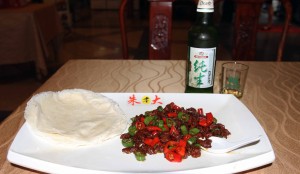
I then went back to the guesthouse, dropped my stuff off, showered, and went out to dinner. Most dishes on the menu at the restaurant I chose still had the animals’ heads intact, staring down their devourer with glazed-over eyes. I would’ve liked to have chosen a more unique dish such as one of those, but given my state of health and not wanting to work hard at eating my meal (I can’t imagine much meat being found on the skull), I chose a safer cuisine, which ended up being a chicken and chopped pepper mix (I’ve been having these a lot lately) with thin rice flatbreads (like tortillas) that you use to wrap the chicken and peppers in (like fajitas!). I also had some beer and ginger tea to ease digestion.
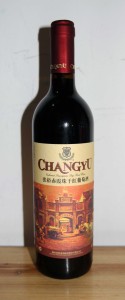
I then went back to the hostel, typed my journal entries, and had some of that Chinese Cabernet Sauvignon. The wine was dry and palatable, having a vegetal and peppery taste, but fell kind of flat in my mind. Unfortunately, since my sickness has worsened and my nose is stuffy, I can’t give an honest review of the product. As is, I find it entirely drinkable, not bad, just not great. Given the price, 45 ¥ ($7.21), it’s better than a number of wines I’ve tasted before at that price, so at least it’s a bargain – actually, given my recent history, I was buying Cabernet Sauvignon at a local drinkery for $3.00 a glass that didn’t taste any better than this, so to get a bottle for $7.21 is great. Once again, all those articles I have read claiming China to be an emerging and noteworthy wine producer seem justified; I just hope they have the proper safety regulations in place to ensure the quality of the wine, as well as to make sure it is contaminant free (I add this because of all those other articles I’ve read regarding other Chinese products – you best shape up China!). I then went to sleep in a wine coma (the best kind of coma, absolutely heavenly).
